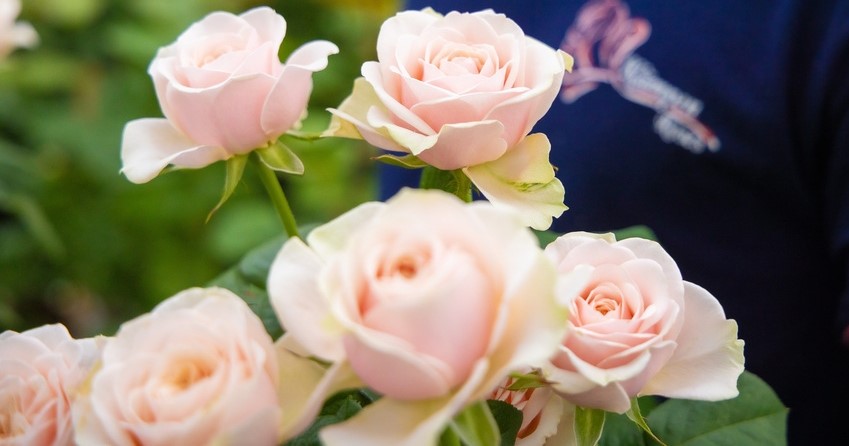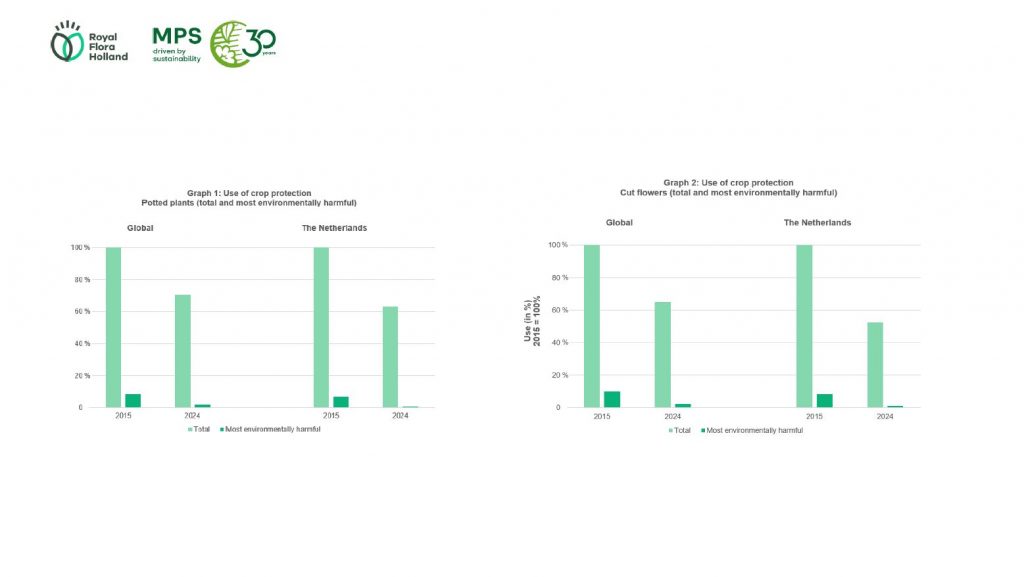
Mother’s Day traditionally represents a significant peak in activity and sales within the floriculture industry. No wonder, as recent research by Flower Council Holland shows, 7 out of 10 people are made happier by flowers or view them as a mood enhancer in their home. The sales figures from Royal FloraHolland, for 180 million flowers and plants over the first three days of Mother’s Day week, show that the demand for flowers and plants in the run-up to Mother’s Day is higher than last year. Figures for the last decade also show a sharp decline in the use of crop protection against pests and diseases.
Global decline in use of crop protection products
To provide the best quality flowers and plants, growers use crop protection to protect their products from diseases and pests. They do so only when necessary and as little as possible. Worldwide, cut flower growers are using 35% less pesticide (kg active ingredient per hectare) than a decade ago. The use of the most environmentally harmful (‘red’) substances has fallen by 78%. Potted plants show a similar trend, with an overall reduction of 29% and a 79% reduction in the most harmful substances. In fact, since 2015, Dutch pot plant growers have reduced the use of the most environmentally harmful inputs by 96% and cut flower growers by 88%. This is according to the latest figures from MPS, an organization that promotes and tracks the sustainability of international floriculture.

Industry rapidly developing with more sustainable farming practices
The floriculture industry’s transition to more sustainable growing methods is well underway. Examples include the use of biological control agents, the use of insect netting (e.g. window screens or cover crops), but also the use of robotics and breeding (stronger varieties) to make plants and flowers more resistant to disease and pests.
Sales figures underline this positive trend
In the run-up to Mother’s Day 2025, almost 155 million flowers and approximately 25 million house- and garden plants have been traded up to and including Wednesday. The Thursday and Friday sales are in addition to this. This shows Royal FloraHolland’s figures. When it comes to flowers, pink and white are popular choices for gifts. The top 5 most popular flowers are: 1. Rose 2. Chrysanthemum (bunch) 3. Barberton daisy 4. Tulip 5. Peony. Currently, the top five most popular plants are: 1. Moth orchid 2.Rose (pot) 3. Kalanchoe (succulent) 4. Pelargonium (variety of geranium) 5. Osteospermum (variety of daisy)
Transition in full swing
Royal FloraHolland, Dutch Glasshouse Horticulture and Flower Council Holland, together with MPS, present for the first time these figures on the reduction of pesticides in ornamental horticulture.
“It is encouraging to see that the overall use of plant protection products is falling. Fortunately, the proportion of the most environmentally harmful substances is dropping rapidly. Growers are increasingly using preventative solutions and biological pest control measures. You can see this trend all over the world, driven by legislation and market demands as well as the intrinsic motivation of many growers to deliver an increasingly sustainable product.” Daan de Vries, CEO MPS. Pieter Bootsma, CEO Royal FloraHolland. “A bouquet brings joy, connection and positive feelings. The industry is becoming increasingly transparent, thanks in part to certification. This allows us to demonstrate that significant steps are being taken towards sustainability. In addition to certification, we are also working on product footprinting, an environmental footprint per flower or plant. Royal Flora Holland among others, together with Wageningen University, is one of the founders of this FloriPEFCR, which will provide more insight into the environmental impact.”
Source:Royal Flora Holland
